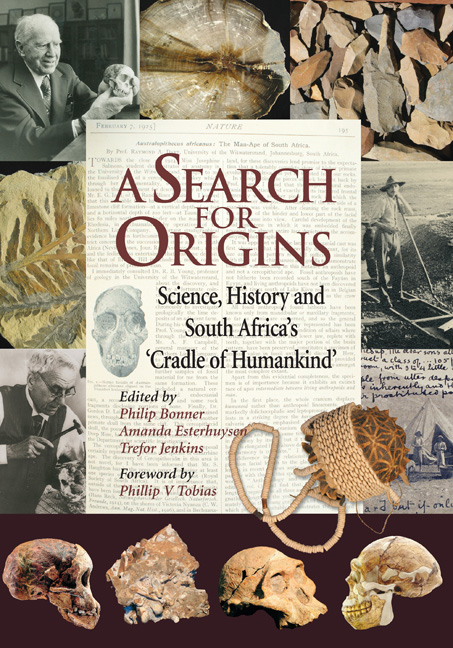Book contents
- Frontmatter
- Contents
- Map
- Foreword
- PART 1 Introduction: Africa is Seldom What It Seems
- PART 2 Introduction: Fossils and Genes: A New Anthropology of Evolution
- PART 3 Introduction: The Emerging Stone Age
- PART 4 Introduction: The Myth of the Vacant Land
- PART 5 Introduction: The Racial Paradox: Sterkfontein, Smuts and Segregation
- Epilogue: Voice of Politics, Voice of Science: Politics and Science After 1945
- Notes, references and recommended reading
- Notes on contributors
- Acknowledgements
- Index
PART 5 - Introduction: The Racial Paradox: Sterkfontein, Smuts and Segregation
Published online by Cambridge University Press: 31 May 2019
- Frontmatter
- Contents
- Map
- Foreword
- PART 1 Introduction: Africa is Seldom What It Seems
- PART 2 Introduction: Fossils and Genes: A New Anthropology of Evolution
- PART 3 Introduction: The Emerging Stone Age
- PART 4 Introduction: The Myth of the Vacant Land
- PART 5 Introduction: The Racial Paradox: Sterkfontein, Smuts and Segregation
- Epilogue: Voice of Politics, Voice of Science: Politics and Science After 1945
- Notes, references and recommended reading
- Notes on contributors
- Acknowledgements
- Index
Summary
The gold discoveries on the Witwatersrand changed the face of South Africa. By 1896, mines on this reef were producing one-third of the entire world's gold supply and by 1914, two-thirds. Gold mining's voracious demand for cheap African labour partly authored the system of territorial segregation (which later developed into apartheid) with which South Africa later became synonymous. The demand for agricultural goods on the Witwatersrand also stimulated an economic revolution in agriculture, which prompted commercialising white farmers to expel landless Boer bywoners (tenants) from their farms, thus making visible for the first time the ‘poor-white’ problem which would dominate white politics in South Africa for the first half of the twentieth century.
The quest for gold in South Africa in the mid- to late nineteenth century is recounted in Chapter 12 by Philip Bonner, and emphasises the close connections of the Cradle area and of the palaeontological discoveries for which it later became famous, with the mining of gold. The first serious efforts at mining gold in the Witwatersrand area took place in the Cradle in the early 1880s; the remains of several of these mines are still visible today. The Cradle's palaeontological riches only revealed themselves as a result of the mining of lime, one of the prerequisites for the refining of gold.
The riches yielded by gold also greatly increased the size and significance of the geological and wider scientific community on the Witwatersrand. One result of this development was interest registered by successive South African governments and statesmen in exposing and promoting South African scientific endeavours, which they saw not only as economically advantageous but also as a marker of white South Africa's progress and ‘civilisation’. The establishment of the University of the Witwatersrand in 1922 was one landmark in this process. The establishment two years later of a Chair in Anatomy, whose first incumbent was Edward Philip Stibbe, followed shortly thereafter by Raymond Dart, created the context in which some of the fossil remains exposed in the process of lime quarrying would be recognised as those of hominids, and humankind's earliest ancestors could be located in the sub-continent rather than in Europe or Asia.
- Type
- Chapter
- Information
- A Search for OriginsScience, History and South Africa's ‘Cradle of Humankind’, pp. 201 - 205Publisher: Wits University PressPrint publication year: 2007



